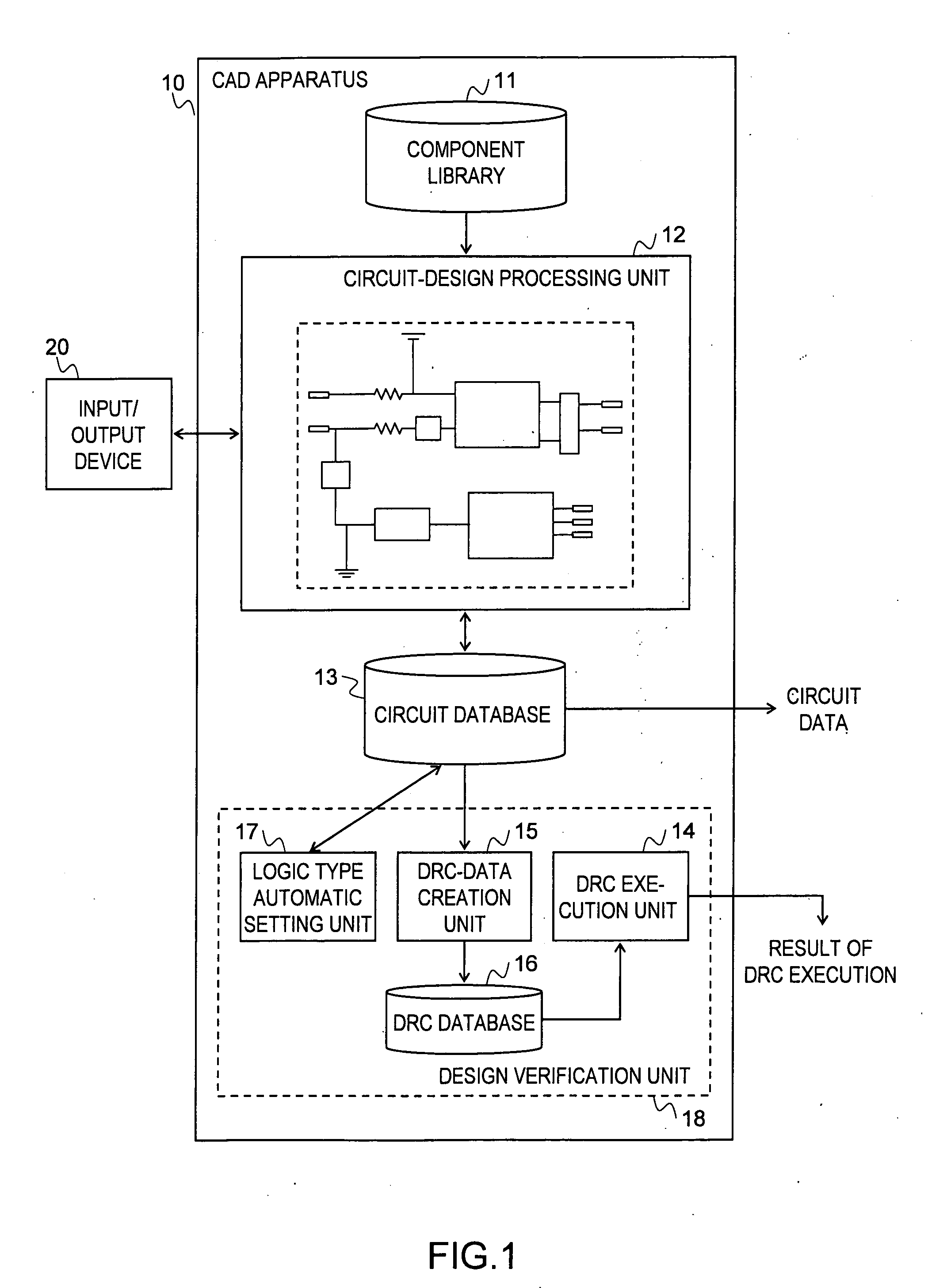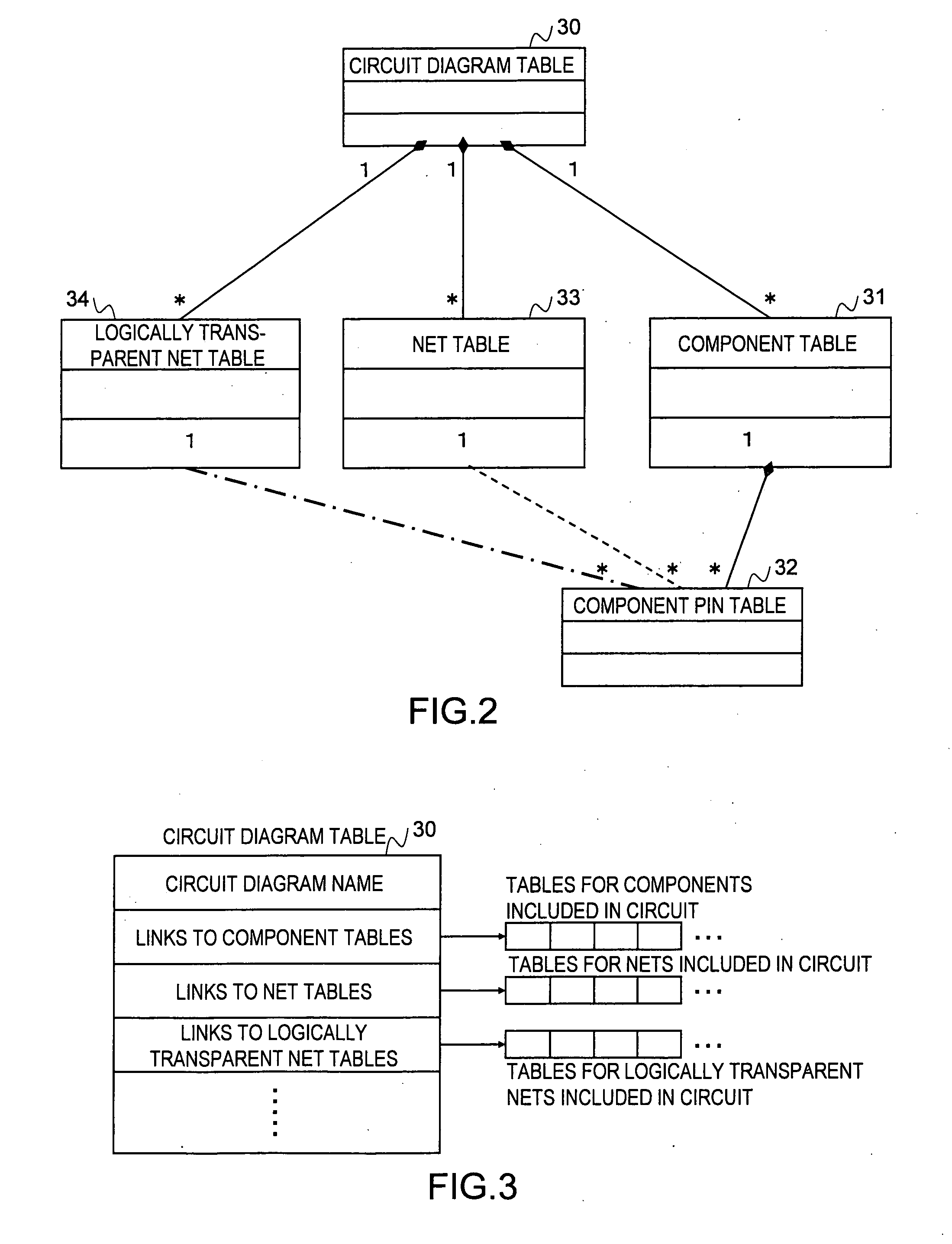Verification apparatus, design verification method, and computer aided design apparatus
- Summary
- Abstract
- Description
- Claims
- Application Information
AI Technical Summary
Benefits of technology
Problems solved by technology
Method used
Image
Examples
Embodiment Construction
[0088]FIG. 1 is a diagram illustrating a configuration example of a CAD apparatus according to an embodiment of the present invention. A CAD apparatus 10 includes a component library 11, a circuit-design processing unit 12, a circuit database 13, a DRC execution unit 14, a DRC-data creation unit 15, a DRC database 16 and a logic type automatic setting unit 17. The DRC execution unit 14, the DRC-data creation unit 15, the DRC database 16 and the logic type automatic setting unit 17 configure a design verification unit 18 of the CAD apparatus 10 according to the present embodiment.
[0089]In response to the designer's manipulation of an input / output device 20, the circuit-design processing unit 12 carries out the processing for circuit design. By manipulating the input / output device 20, the designer selects components to be used from the component library 11 and inputs the components to a circuit diagram. The component library 11 is a library of components to be utilized in a circuit. T...
PUM
 Login to View More
Login to View More Abstract
Description
Claims
Application Information
 Login to View More
Login to View More - R&D
- Intellectual Property
- Life Sciences
- Materials
- Tech Scout
- Unparalleled Data Quality
- Higher Quality Content
- 60% Fewer Hallucinations
Browse by: Latest US Patents, China's latest patents, Technical Efficacy Thesaurus, Application Domain, Technology Topic, Popular Technical Reports.
© 2025 PatSnap. All rights reserved.Legal|Privacy policy|Modern Slavery Act Transparency Statement|Sitemap|About US| Contact US: help@patsnap.com



